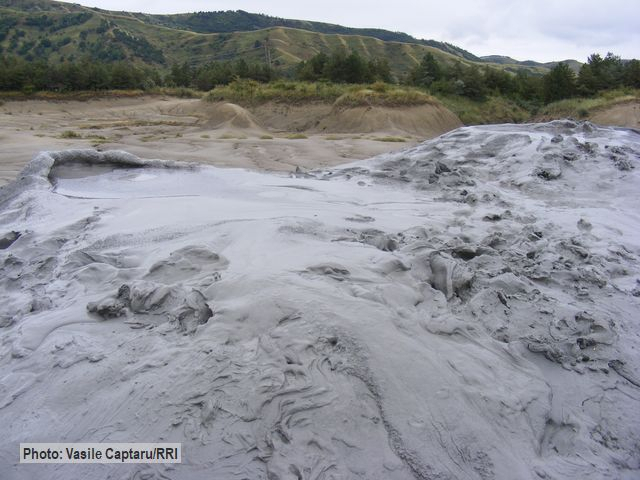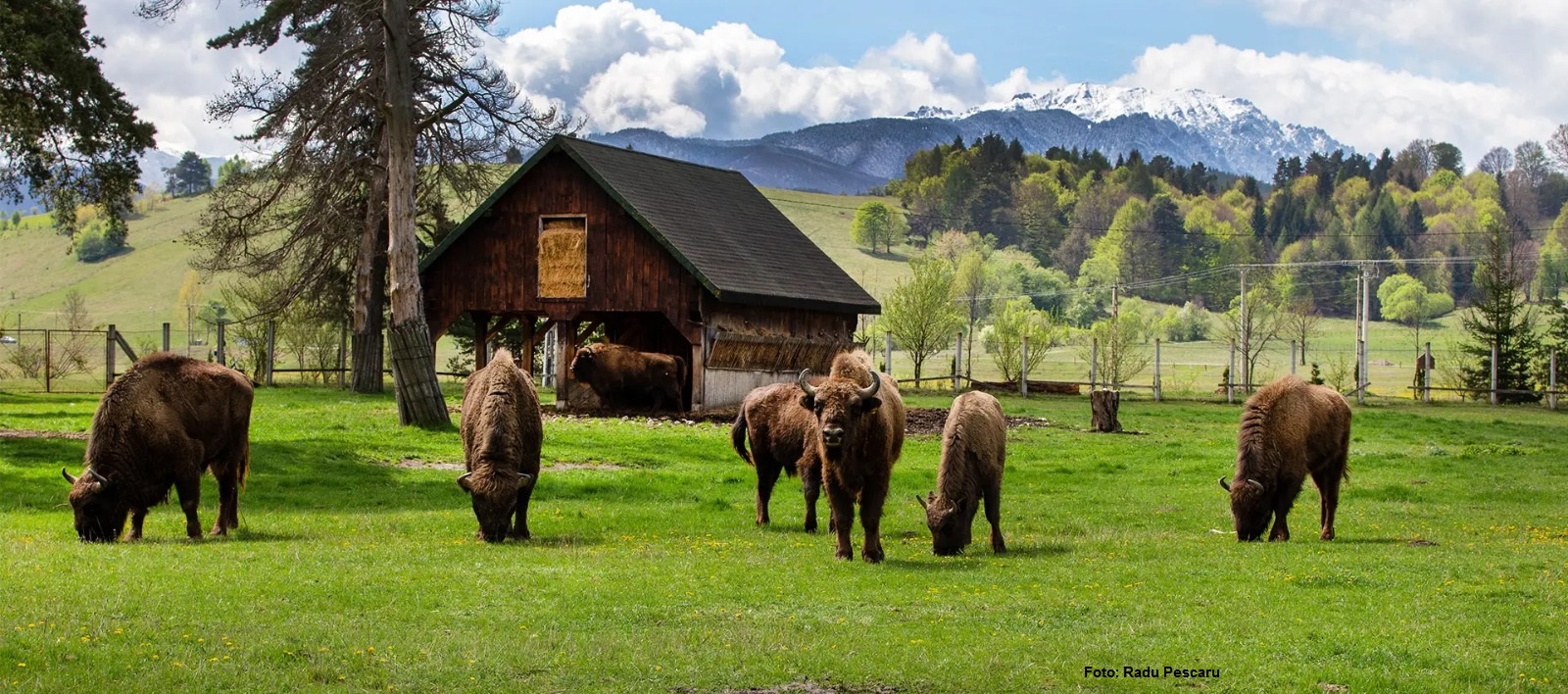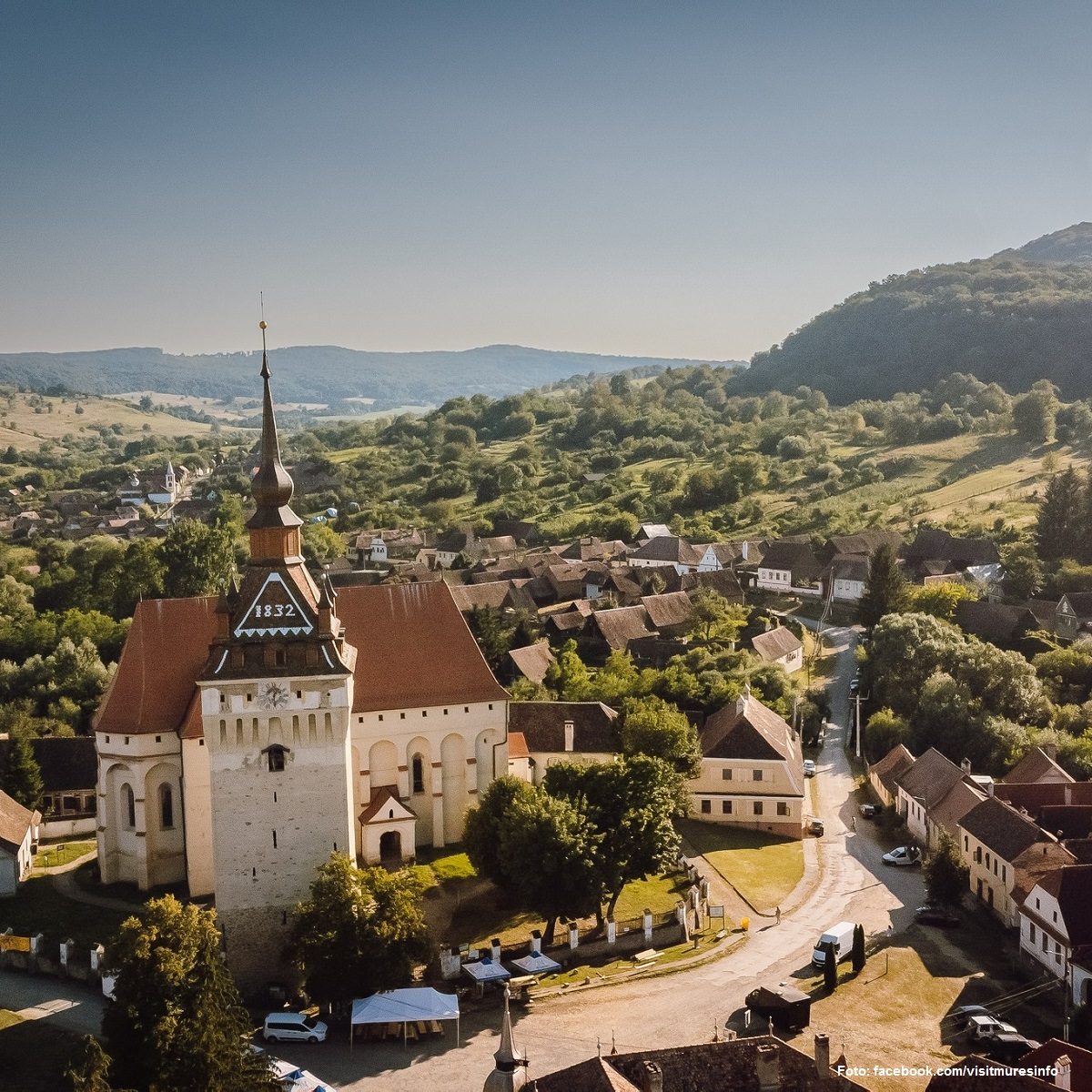Tourist Attractions in Buzau County
Today we are heading towards the south-eastern part of Romania, outside the Carpathian bend

Daniel Onea, 07.03.2024, 12:16
Today we are heading towards the south-eastern part of Romania, outside the Carpathian bend, to the crossover of the historical provinces of Wallachia, Moldavia, and Transylvania. Buzău County earned its name as Little Romania, due to the diversity of the relief encountered. It is a picturesque area, but also one full of legends. Starting from the city of Buzău, the county seat, we will head towards some of the most interesting objectives in the county. And, in the municipality of Buzău, there are many points of tourist interest, says Daniel Costache, director of the Buzău County Museum.
“First of all, it must be said that Buzău is one of the municipalities where the pre-war and inter-war air is still preserved in the urban architecture. We are thinking of the Albatros Villa, inextricably linked to the personality of Alexandru Marghiloman (diplomat, politician, lawyer), the Communal Palace, which is one of the jewels of late 19th century, early 20th century architecture, where Buzau City Hall currently functions. In addition to many other buildings, I mention the recently rehabilitated building of the former I. C. Brătianu Surgical Hospital, one of the emblematic edifices both in terms of architecture and functionality. It was, by turns, a specialized hospital, a front line hospital and, in the second half of the 20th century, it functioned as a hospital serving the entire Buzau county. I can’t forget the building housing the Buzău County Museum, or the Museum of Archaeology, History and Art. Also on the territory of Buzău county we have the oldest civilian stone construction in this area of Romania. This is Casa Vergu Mănăilă, as it is known in the local lingo, where today the Museum of Ethnography of the same name operates. It’s a construction that appears in documents at the end of the 18th century, i.e. 1792-1794.”
Our virtual journey continues, and we learn that Buzău county is dominated by two important valleys from a tourist point of view.
“We have Valea Buzăului, on the one hand, and the valley with the salt mountains, Valea Slănicului. For a tourist who is in the vicinity of the capital and wants to spend a weekend in Buzău, I would recommend Valea Buzăului first. Here he will see the Măgura Camp open-air museum. It is located in the vicinity of the Ciolanu Monastery, an emblematic place of worship for everything that means the history of Christianity in the south and southeast of Romania. This route should under no circumstances miss the Mud Volcanoes, the Berca Monastery, or the Colți Amber Museum. Then, if we are talking about a tourist eager for adventure who wants to spend some time in nature and can go on foot, I recommend the area, Nucu-Buzioru-Aluniș, an area where the monks’ cells carved in stone are also known as Little Athos or the Romanian Athos.”
We learn from Daniel Costache, the director of the Buzău County Museum, that the Mud Volcanoes form a unique place in Romania. They created a landscape likened by specialists to the lunar landscape, where an extraordinary natural phenomenon takes place.
“It’s about the existence of pockets of gas somewhere at an estimated depth of 3,000 meters, which, under the pressure of the earth’s crust, come to the surface, and on their way they pull up several layers of water tables, different types of clay and rock, which they bring to the surface in the form of volcanoes that may or may not have cones. Therefore, they are of many kinds. It’s a landscape that stretches over several thousand square meters, divided into two areas: Pâclele Mari and Pâclele Mici.”
On the other hand, the cave habitations spread over an area of several square kilometers.
“It is a medium to difficult route to some, in the piedmont area of Buzau county. They are for the most part grottos, naturally occurring, and anthropically intervened, which served since the 2nd-4th centuries AD as shelters for the first Christian monks, who brought in, and which primarily spread Christianity in this area of Romania. There are many, they are beautiful, and, over the course of a year, as we have counted so far, more than 25-30,000 tourists come to visit them. The tourist venturing into this area must be prepared for a mountain road, a road that, along with the caves themselves, also offers fantastic scenery. We can’t help but talk about the Buzău UNESCO GeoPark, where activities for adrenaline lovers take place. I would mention ATV trails and, last but not least, the famous rafting races on the Buzau River. “
Several institutions on the territory of Buzău County are developing programs to preserve, but also to disseminate traditional local crafts, continues Daniel Costache, director of the Buzău County Museum. Thus, tourists who want to explore the fascinating world of handicrafts have a rich offer to select from.
“Here I would mention the activities organized by the Buzău County Museum. At the same time, the museums on the territory of the Buzăului UNESCO Geopark and beyond offer tourists the opportunity to purchase products made by these traditional craftsmen. On the museum premises, video clips show the production stages of the products made by Buzau folk craftsmen. Moreover, on the territory of our county there are already several traditional festivals that can satisfy this curiosity. I would mention here the well-known Pleșcoi Sausage Festival. Here, lovers of traditional local products have the opportunity to see many popular craftsmen at work. There is a cultural offer and cultural entertainment. I would start with June, when the Buzău County Council organizes Buzău Fest. It is one of the biggest festivals in this part of the country. It is organized in a well-known place, Monteoru Salt Resort. During the spring-summer-autumn season, almost every weekend, the colleagues from the County Culture and Art Center organize field festivals throughout the Buzău Valley. For a weekend, to escape from a crowded city, Valea Buzăului also offers this alternative.”
In Buzău county, the concept of “cultural sojourn” was also implemented for the first time nationally. It involves combining tourist activities with visits to various museums. Thus, the price of the accommodation includes access tickets to the cultural institutions.






























